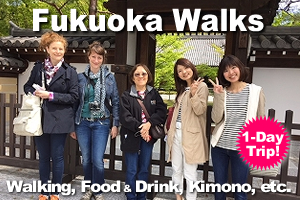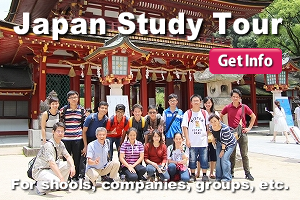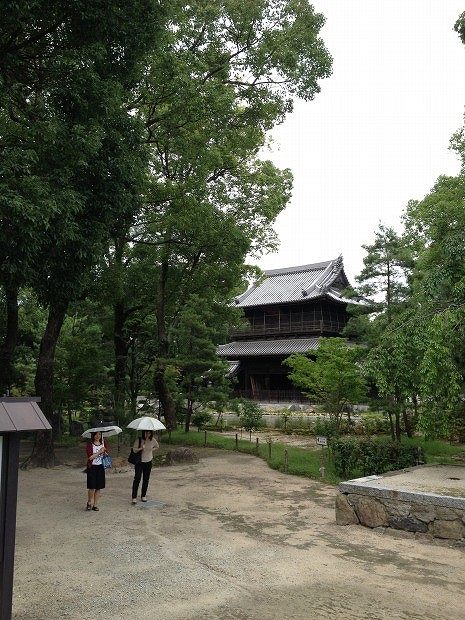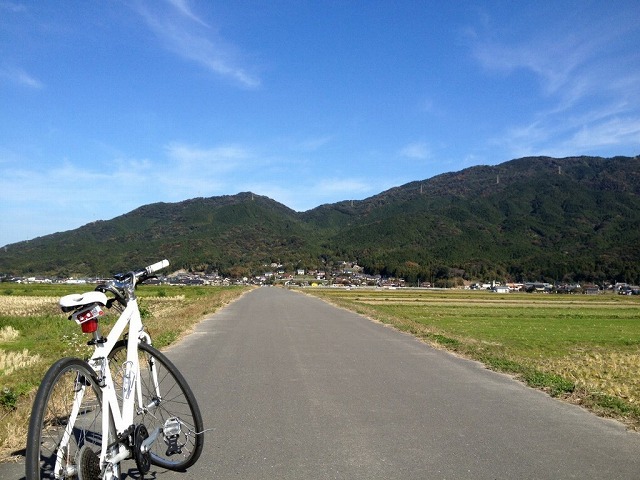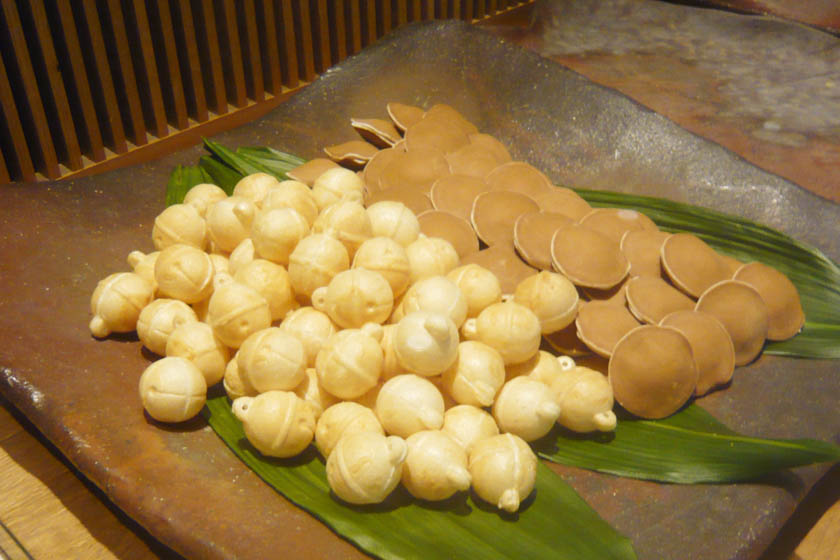Last Updated on 2021/11/08
Hakata, where I live in, is the center of Fukuoka city and was an old urban area that has a long history. When it comes to historic towns of Japan, Kyoto and Nara come in mind first, but Hakata has longer history.
Hakata used to be a hub to communicate with foreign countries. It has thrived as a port town and merchant town since in the 7th century. It became one of the biggest merchant cities and represented of Japan in the 13th century, thanks to trades with China.
It is temples and shrines that played primary roles in this historic town, Hakata. There are some temples and shrines I strongly recommend you visit when you are in Hakata.
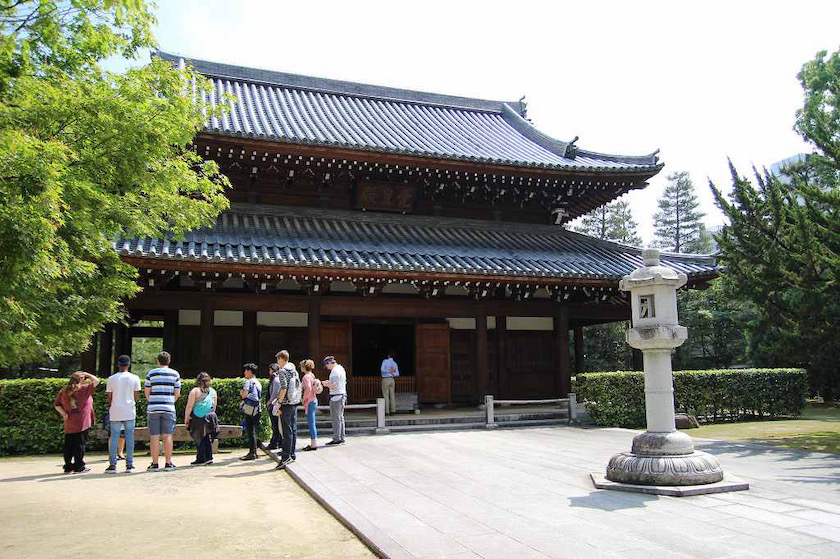
Jotenji temple
Jotenji temple is a temple that I like best. It is a Zen temple belonging to Rinzai sect. It was founded by Shouichi Kokusi in 1242, financially supported by Shakokumei, who was a Chinese trader and later naturalized Japanese.
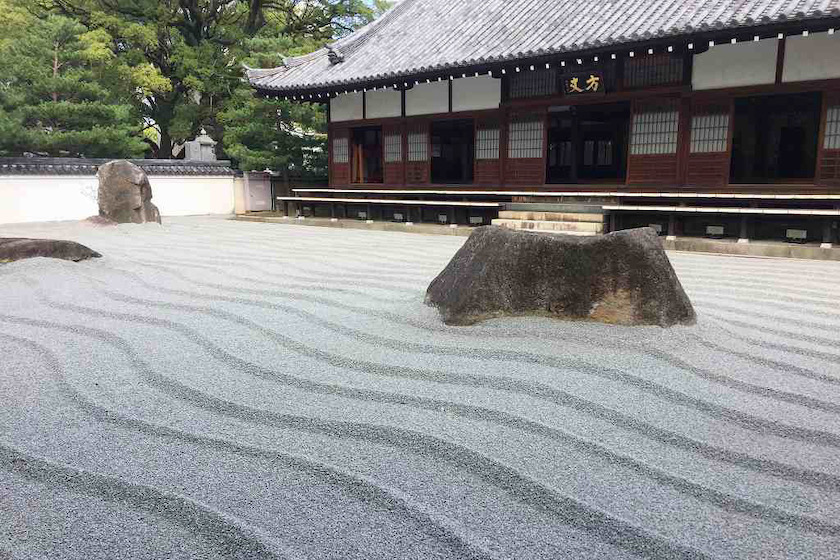
This temple has a wonderful Japanese garden called Sentoutei. The style of the garden is called Karesansui, or dry land scape garden, which is unique in Japan.
That represents sceneries of mountains and water using rocks and sand. In this garden, the sand represents the sea of Genkainada, stones in the center of the garden represent Iki and Tsushima Islands and small stones in front represent Nokono-shima and Shikano-shima Islands. The side of the main hall of the garden represents Hakata and the other side represents Chinese continent.
It also represents the world where Buddhahood is realized, there waves wash waves, no dust at all.
There are some more must-see sites in the ground of the temple.
The monument of the birthplace of Yamakasa festival
Yamakasa is a traditional festival that has lasted over 700 years since 1241, which is held from July-1 to July-15 for 15 days every year in Hakata.
The best part of the festival is “Oiyama” in the early morning on the last day of the festival, July-15. Seven teams carry each float and run around 5 km streets about in 30 minutes.
We are impressed by the scene of men with fundoshi or loincloth (Japanese traditional men’s underwear) running around and shouting “Oisa! Oisa!”.
I can say that Yamakasa is one of the most wonderful festivals in Japan. Come and see it at any cost.
It is said that the Yamakasa is originated at Jotenji temple. In 1241 Shoichi Kokusi, the founder of Jotenji temple rode on a board and ran around the city sprinkling holy water in an effort to cure then-epidemic. That is regarded as a start of Yamakasa festival.
Because of this, during “Oiyama” when people riding on floats pass in front of Jotenji temple, they pray and pay their respects.
The Chrysanthemum Throne
In 1243, Jotenji temple is designated as a temple for the protection of the nation. The Chrysanthemum Throne indicates the relation with the emperor family. Jotenji temple is indeed a high class temple.
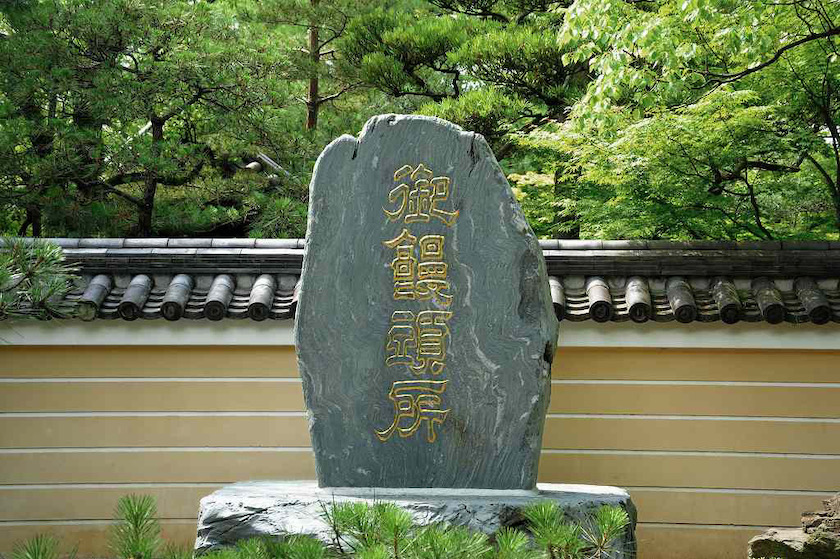
The monument of the origin of “Manju” (Manju is one of Japanese sweets)
Shoichi Kokusi, the founder of the temple learned Rinzai-sect (Buddhism) in China and also mastered how to make manju, udon and soba (udon and soba are Japanese noodles). After he came back to Hakata, he spread those knowledge and information.
As for manju, Shoichi Kokusi instructed how to make to a tea house in Hakata and gave a name board with “Omanju-dokoro” printed. This name board is now preserved in a famous Japanese sweets shop “Toraya” in Tokyo.
The monument of the origin of Udon-Soba noodles
Wow it is Fukuoka that Udon and Soba started in!
The monument of Mitsuta Yazaemon
Mitsuta Yazaemon is the originator of the traditional artifact “Hakata-ori”, which is the silk textile in Hakata. He went to China with Shoichi Kokushi, stayed there for 6 years, learned the skill for textile and came back to Hakata. After that, it is said that offspring of Yazaemon had improve and shaped it and finally produced “Hakata-ori”.
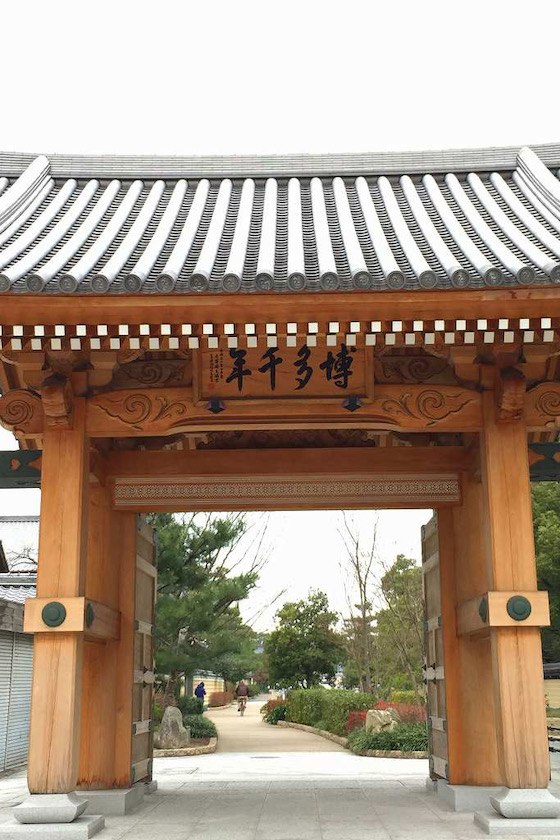
Hakata-sennen-no-mon (1000 year gate)
This gate was built in 2014, which represents the gate that might have existed about 18th century in Hakata. It is for remembering the last 1000 years and wishing prosperity in another 1000 years from now on. The old gate was provably a symbol of Hakata and located at the street led from Dazaifu where a government office was seated at that time.
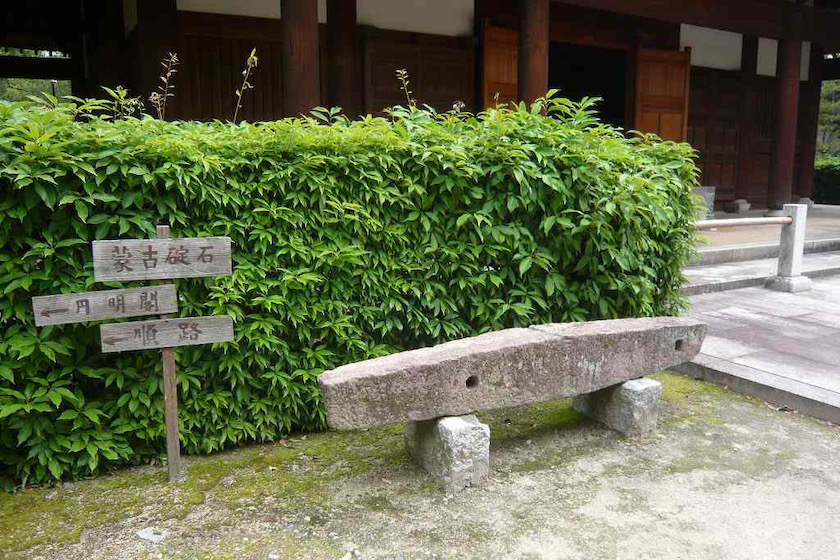
Stone anchor of Mongolian troops
The imperial Mongol (the Yuan dynasty) governed Chinese continent then and tried to invade Ikishima island, Tsushima island and the northern part of Kyushu twice in 1274 and 1281 together with Korai realm. This is called Genko or the Mongolian Expeditions against Japan.
After the first battle, Japan built fortresses around Hakata bay in preparation to the second attack. We can see part of it even now.
Especially Hakata was the battle field and many buildings were burnt down like Hakozaki shrine.
The Mongolian troops were leading first in both battles but most of battle groups were believed to be shipwrecked by storms.
This picture shows an anchor of the Mongolian troops which was retrieved from the sea bed. You can see other stone anchors at Kushida shrine and Hakozaki shrine.
Housai-siki (Housai ceremony)
In 1241, when Shoichi Kokusi was coming back to Hakata, he came across a storm at sea, however, he prayed to Yawatano-kami (one of the Shinto gods in Japan.) and came back to Japan safe and sound.
The next year in order to show thanks of survival, Shoichi Kokushi visited Hakozaki shrine, where Yawatano-kami is enshrined. This is the start of Housai ceremony.
It is a traditional event that Zen Buddhist monks visit Hakozaki shrine and is held on January 11th every year. Many monks walking and reading of a sutra are worth seeing.
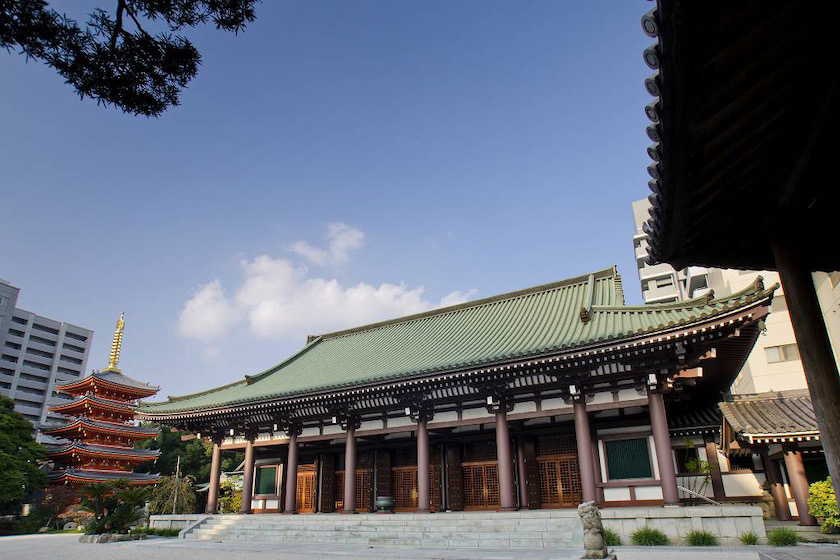
Tochoji temple
This temple is the first temple built by Kukai or Kobo Daishi. He studied in China called Tang in 804. He planned to study there for 20 years.
However, he saw the seventh greatest Buddhist monk in Shingon-sect and mastered Shingon Esoteric Buddhism teachings only in two years. He became the eighth greatest Buddhist monk even he was Japanese.
We can say that Kukai is a genius monk born in Japan.
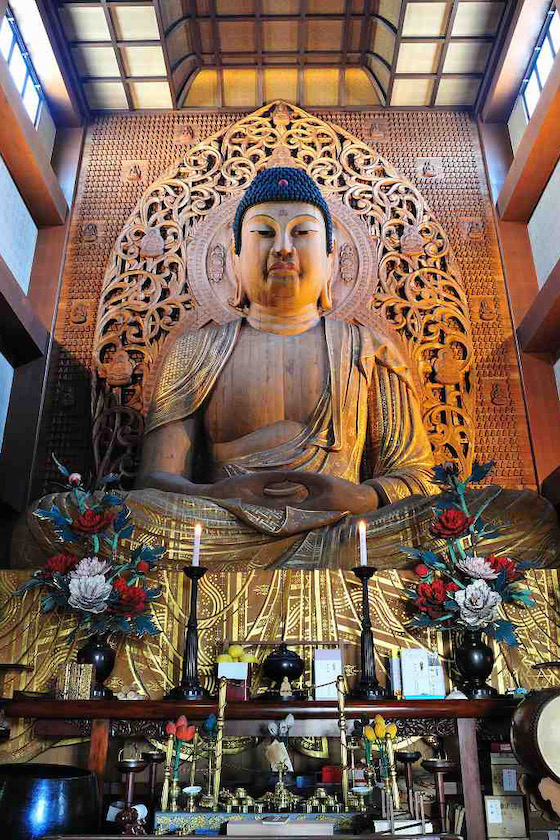
Fukuoka Great Buddha
Tochoji temple has Fukuoka Great Buddha which is the largest as for a wooden seated Buddha statue in Japan. It is 10.8 m tall. Five thousand small Buddha statues are enshrined behind the Big Buddha.
The hell and the heaven tour
There is an exhibition room named “The hell and the heaven tour” inside of the pedestal of Fukuoka Great Buddha. In the room eight pictures of the hell are displayed so that you can learn the Buddhism thought.
Inside the exhibition room, you must walk in complete darkness from the middle of the part. It is said that if you can touch the iron ring which is located somewhere on the path, you can go to the heaven.
Why don’t you trying that? Finally you can go to the heaven and feel relieved.
Five‐storied pagoda
The five storied pagoda is for enshrining the remains of Buddha called “Busshari”. The five storied pagoda of Touchoji-temple also has Busshari, which Kukai brought back from China.
The reason why five storied pagoda is five storied is that the five represents basic elements which create the world, i.e. “land”, “water”, “fire”, “wind”, “sky” according to Buddhism thought.
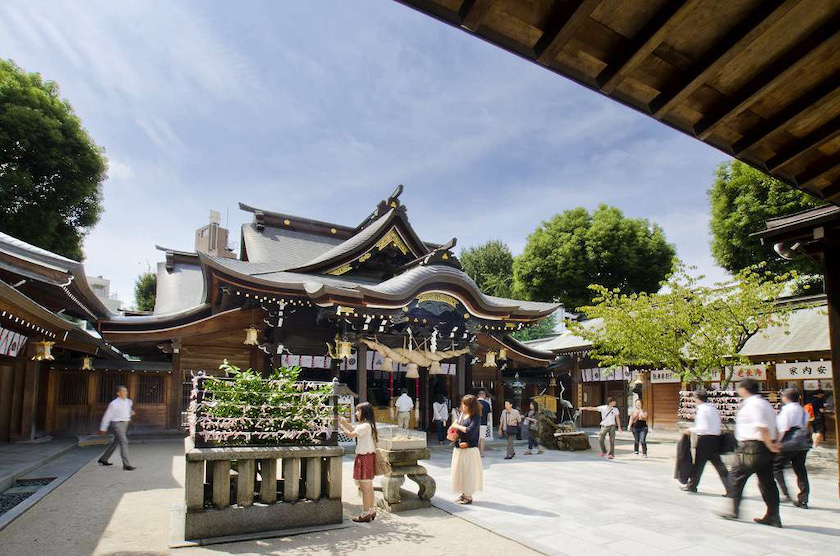
Kushida shrine
This shrine is the guardian god in Hakata built in 757. It is said that the shrine has powers to bless people with perpetual youth and longevity, and prosperous business. Three gods of Amaterasu-oomikami, Ohatanusi-no-mikoto and Susanoono-mikoto are enshrined in this shrine. If you visit this shrine, it will be considered you visit three shines.
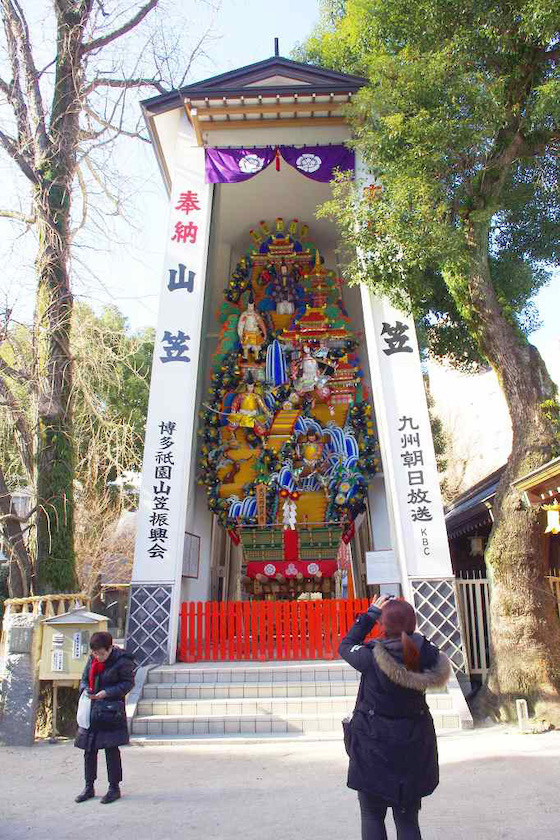
Kazari-yama (decorated float)
During “Yamakasa” festival, a well-known festival in Hakata, decorated floats called “Kazari-yama” are displayed at several places in Fukuoka city. Kazari-yama are made by craftsmen of Hakata-doll but they are broken after the festival is finished. However, Kazari-yama in Kusida shrine is always displayed.
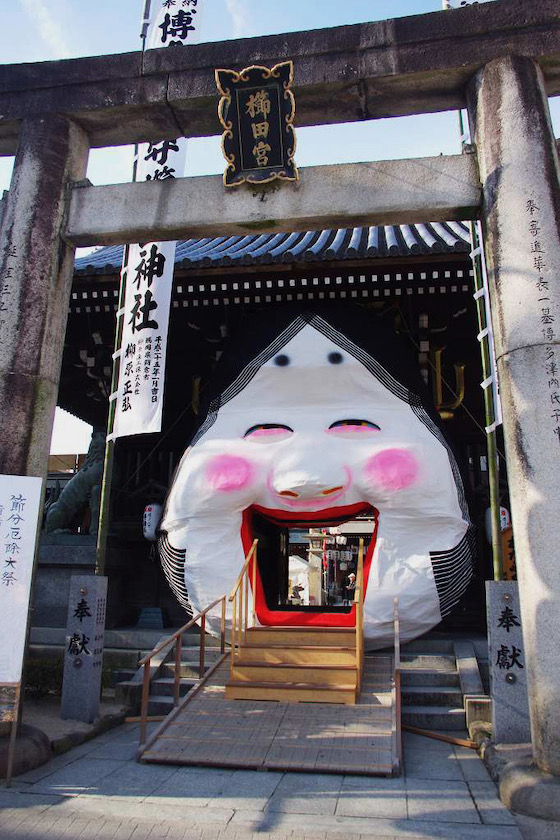
Otafuku-men (Otafuku is a Plain woman and men is a mask)
In February, the biggest Otafuku-men in Japan is placed at the gate of Kushida shrine. It is said that you will be answered for “prosperous business” and “the safety of our family” if you walk through a mouth of the Otafuku-men. I myself did it many times.
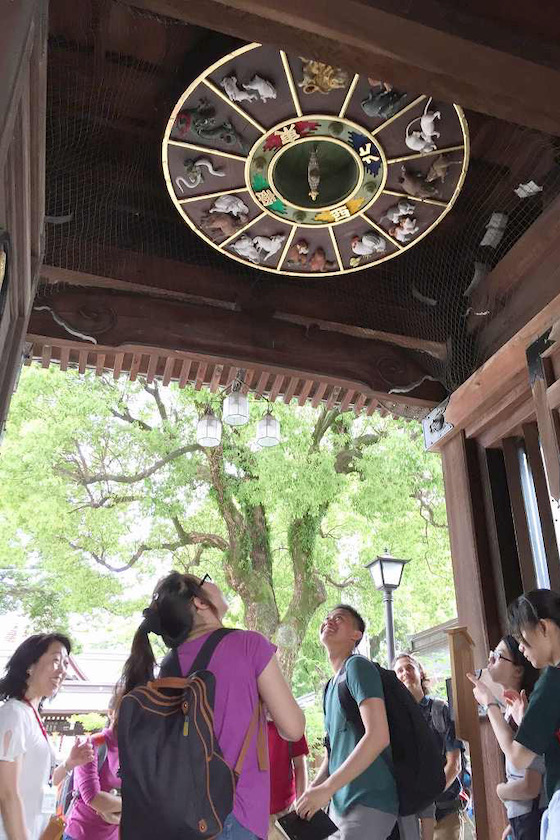
Eto-eho-ban (eto is an Oriental Zodiac, eho is lucky direction, ban is a board)
An arrow on the Eto-eho-ban is revolved on December 31st every year so that it points a lucky direction of next year.
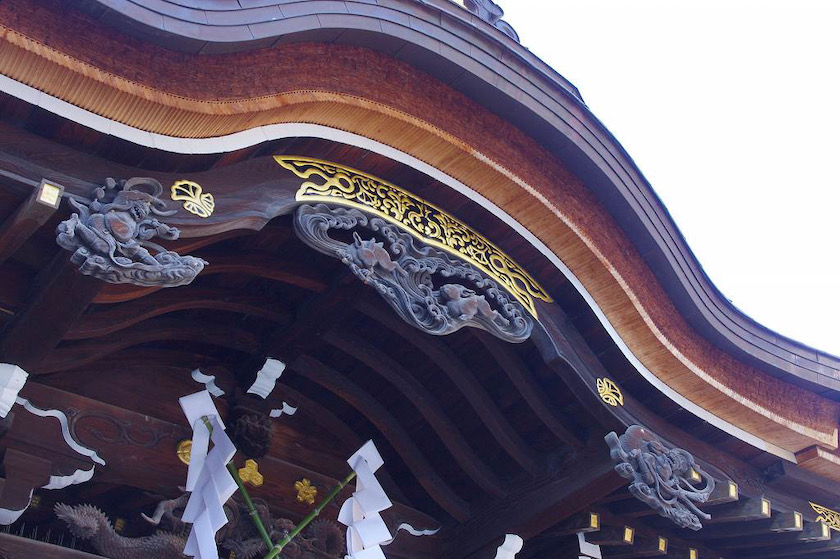
The wind god and the thunder god of Hakata
Carved wooden figures of the wind god and thunder god are set up at the hall of worship of Kushida shrine. A scene that the wind god is sticking out its tongue to the thunder god and is running away is shown humorously.
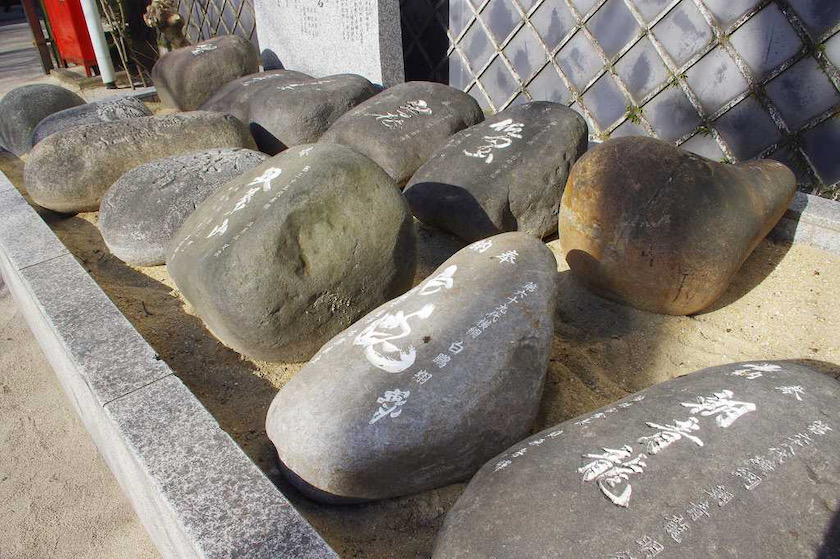
Chikara-ishi (Stones to show power)
Stones that famous sumo wrestlers lifted up to self-praise their strengths are dedicated in Kushida shrine. Let’s trying it!
The popular walking tour “Fukuoka Walking Tour”
The walking tour will take you to Jotenji temple, Tochoji temple, Kushida shrine and so on. The tour is very informative, so you can learn the history and culture of Japan and Fukuoka by visiting temples and shrines. The certified national tour guides will take care of you in an easily understood manner in English. I am sure you can enjoy the tour!
Fukuoka Walking Tour
http://fukuokawalks.com/fukuoka-walking-tour/
If you have any questions, please feel free to contact us by the website form.
>> General Inquiry
